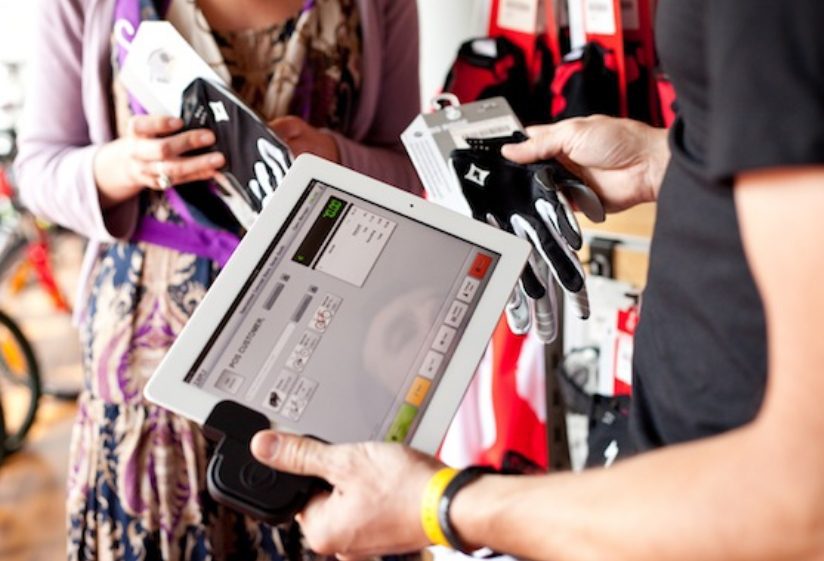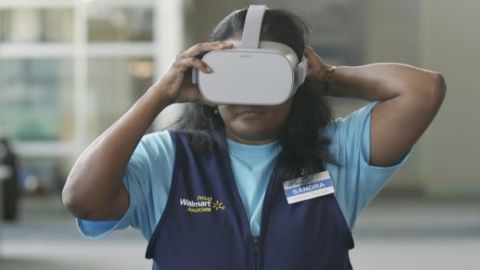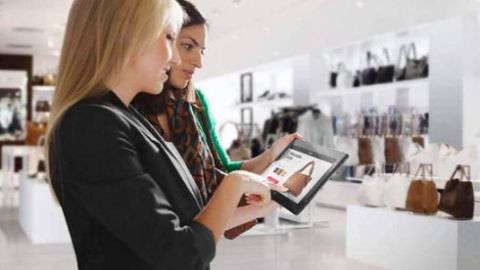As smartphones become a critical shopping tool for consumers, they expect associates to have the same level of access to digital information. In fact, 85.3% of shoppers expect retailers to provide associates with handheld or fixed devices to check inventory and price within a store, a nearly 51% increase over 2017, according to a survey from SOTI.
The Annual Connected Retailer Survey has found that consumers’ expectations of in-store technology have heightened dramatically year over year:
- Mobile registers: 41.7% of shoppers expected this in 2018, up 64.3% from 2017; and
- Handheld devices to communicate with the back room — 22.3% of shoppers expected this in 2018, up 29.65% from 2017.
Retailers are adopting technologies such as mobile point-of-sale (mPOS) devices with scan-and-swipe functionalities, and are even implementing modern kiosk devices that enhance self-checkout for in-store customers without the intervention of a sales associate, according to Ryan Webber, Director of Enterprise Mobility at SOTI.
“These mPOS devices ensure long queues do not form in the stores so employees can assist with inventory scanning and merchandising checkout,” said Webber in an interview with Retail TouchPoints.“This also improves customer experiences within stores, as associates can approach customers and scan their products in carts, swipe credit cards for payments and more.”
67% More Shoppers Say In-Store Mobility Accelerates Purchase Journey
Overall, 76% of shoppers indicated that retailers that use more mobile technology (both self-service and used by sales associates) enable a faster shopping experience, an increase from 67% last year. Additionally, 73% of respondents were in favor of self-service technologies that are designed to reduce staff interactions and streamline the experience — up 10.6% from last year.
In order to support consumers’ needs and expectations, retailers must invest in more in-store wireless infrastructure, upgrade payment infrastructure and add next generation beacon technology, according to Webber. He did warn retailers that as they continue to implement new technologies, they must prioritize the security measures required to make the platforms safe for consumers.
“Often these technologies are vulnerable to external threats,” Webber said. “A compromised credit card can make the most loyal of customer run for the hills. Securing any new technology and ensuring it is compliant should be paramount for retailers to safeguard reputations and ensure a secure end-to-end consumer experience.”
For example, Webber noted that mobile kiosks are “ideal targets” for criminals. He explained: “Mobile kiosks that are unsecured can be used to leak valuable customer information, and at the same time, if left unmanaged, can result in devices being out of operation during busy store hours resulting in lost revenue and productivity.”
While mobile technology can bolster the store experience, it also is helping consumers be more comfortable with different types of fulfillment methods. As many as 64% of consumers expressed that they would be comfortable with new shipping methods offered by retailers, up 6% from last year. But shoppers appear to be gaining much more comfort with the most radical changes in delivery. As many as 37.1% of consumers say they are significantly more comfortable with retailers and transportation companies using drones, an increase of 28.8% since last year, while 35.5% are more comfortable with autonomous vehicles, an increase of nearly 27%.
Voice-Activated Shopping Has Room For Growth
Virtual assistants like Amazon Alexa and Google Home have garnered massive hype, with experts and analysts indicating that they’re driving the “conversational commerce” movement. Despite Amazon’s announcement that voice orders via Alexa tripled during the 2018 holiday season, only 25% of consumers with a Virtual Assistant have used it for voice-activated shopping, according the SOTI survey.
However, Webber did note that “this is just the beginning” for these technologies, so retailers can’t just give up on voice shopping yet.
“Virtual assistants have completely transformed the way society uses technology,” Webber said. “While these virtual assistants/voice-activated shopping technologies are still new in-home, we are continuing to keep an eye on how retailers will implement these technologies in-store and to increase e-Commerce. We’re confident that voice-enablement will be a future shopping trend at brick-and-mortar stores. If you think about it, voice allows for the consumer to keep their eyes on the showroom as opposed to on their phones.”












